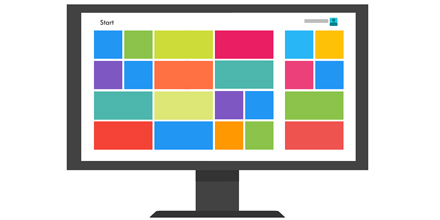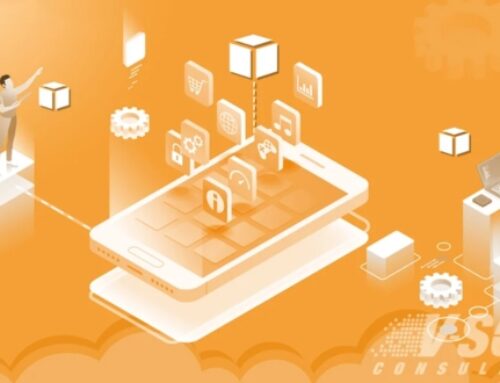The process of designing computer software or collecting applications to carry out the various functions a business needs is known as application development. Applications help businesses automate processes and increase efficiency by creating sales reports and generating monthly budgets. Whenever an app is being developed, the same steps are always taken: gathering requirements, developing prototypes, testing, implementing, and integrating.
Software can be created to do a wide range of tasks, including:
- Computers are equipped with system software that enables them to carry out fundamental tasks like managing drives and other hardware and maintaining operating systems.
- Programmers typically employ programming tools like text editors, compilers, and debuggers to give them a variety of ways to write code.
- Users can perform a wide range of tasks using application software, including managing media, conversing on social media sites, and connecting mobile devices to laptops, to mention a few. These are frequently referred to as apps and comprise features that the majority of people undoubtedly consider when using computers.
Process for Developing Applications
To create an app, the software application development process entails several steps:
- In order to establish the right steps required to construct the program, the initial stage entails selecting a specific method or model. The approach or model offers a broad framework that directs the creation process. We’ll go into more detail about a number of other approaches or models later.
- Choosing the function(s) the app should do is the second stage.
- The app can function after a foundational system has been created.
- Software programmers come up with potential fixes for any issues that might arise when the app is used.
- In order to test the app’s functioning, a preliminary prototype was created.
- Modeling tools like SysML or UML are frequently used to create these preliminary prototypes.
- Coders then begin creating the app’s code in the proper coding language. Regulation is frequently examined by teams or peers.
- Following that, the app goes through a testing phase to see if it works as intended and to check for any unexpected issues.
- The software is updated to fix any flaws or issues and ensure that it performs to its fullest capacity. The app is typically not made available for widespread usage until all bugs have been fixed and it has been determined to be stable or functional.
- Then, the program is made available for use.
- Finally, to ensure that it keeps working as intended, the app is monitored and maintained.
Services for Windows Application Development:
- Useful apps
- Apps for Task Management Enhancement
- Apps with seamless data connectivity
- Apps for media enhancement
- Microsoft Office Mobile development and Pocket Outlook management
- Apps that support numerous APIs (Bluetooth)
- Windows-based mobile game
Benefits of Windows Application Development:
- In order to simplify –
With the widespread adoption of remote work, IT must provide end users with access to critical apps no matter where they are or what device they are using—even if it is not a company-issued one.
- To reduce costs –
Current-generation devices can now access tried-and-true solutions by having virtual apps delivered through the browser. When you have the correct virtual app delivery platform, there’s no need to spend money on ill-tested new software, pricey virtual desktop infrastructure (VDI), or labor-intensive provisioning techniques.
- Boosting security –
Browser-based Windows application execution has the potential to be substantially more secure than competing methods. Because of this, there are fewer opportunities for malevolent actors to abuse it. It can lessen the attack surface for remote workers by doing away with the requirement for VPNs and exposed RDP ports.
- Increasing productivity –
The flexibility of remote work is another advantage of delivering classic Windows software through a browser. The apps a user needs can still be accessed securely even if they go to a different device or location. Without breaking a beat, they may continue working as usual. However, the supply of virtual apps is also fantastic for IT.
- To improve user experience –
Users receive the exact same desktop version of a Windows application they are accustomed to when using it in a browser. The main distinction is that the software opens in a browser tab as opposed to being installed locally. It is absolutely transparent to the end user because there is no learning curve and no VPNs to navigate.
Types of Applications Software
The following categories of application software can be broadly characterized. Your choice of variety will rely on your needs for employment. However, generic application software is categorized broadly here. Looking at them makes it simpler for us to define software when referring to application software.
- Online browsers –
These applications of software help people visit websites and carry out research. They support users’ information retrieval and web exploration. Internet Explorer, Chrome, Firefox, MS Edge, Safari, and more popular web browsers are available. Users with these browsers can utilize search engines like Google, Bing, Yahoo, and others to explore the web and conduct searches.
- Presentation-making tools –
This program was created for both personal and professional use. It is made to help users put information and concepts into presentations. Businesses employ software programs that make it simple to create presentations with the click of a mouse.
- Spreadsheet applications –
Spreadsheet software allows for the tabular representation of data. Through formulas and functions, they facilitate simple calculations.
Spreadsheet software that aids in data organization, analysis, and storage. They aid in handling data and doing complex calculations with ease. The information is all organized nicely into rows and columns. Spreadsheet software can be used by users to make computations. In this industry, Microsoft Excel, Google Sheets, and Apple Numbers are the most popular application programs.
- Graphic software –
Visual data can be easily edited using graphics software. It allows for illustration and image editing.
Users of graphics software can utilize their computers to create images and illustrations. Adobe Photoshop and PaintShop Pro are a couple of examples of application software.
- Text editors –
Software for word processors enables the creation, enhancement, and manipulation of text. They offer a way for a wide range of capabilities that enable efficient text consolidation and editing.
The user can input, edit, format, and output text with the aid of this software. Additionally, by giving users access to a thesaurus, synonyms, and other tools, this kind of software contributes to the creation of an amazing visual experience. The software also features font sizes, colors, and styles.
- Database application –
This program, also referred to as database administration software, aids in efficient data management. This program makes it simple to organize data and to access it.
A program called a database management system, or DBMS, is designed for retrieving, storing, and searching data from a single database. This program modifies data to gain access to it while searching DBMS. MS Access, Oracle, and MySQL are a few DBMS types.
- Multimedia applications –
These programs make it simple to create audio, video, or visual files. They deal with the creation and sharing of all fundamental multimedia. They have a wide range of tools to make this easier.
Specifically designed to capture, produce, and edit audio and video data. It plays a large role in the media, telecommunications, and entertainment industries.
- Education software –
Education software refers to any program that improves the educational process. In classroom settings, teachers use this form of software to transfer knowledge to students. Education software, for instance, makes it simpler to deliver lectures with visual and aural experiences to make learning enjoyable and simple. ProProfs, Schoology, Google Classroom, TalentLMS, Litmos, and other industry standards for educational software are available.








